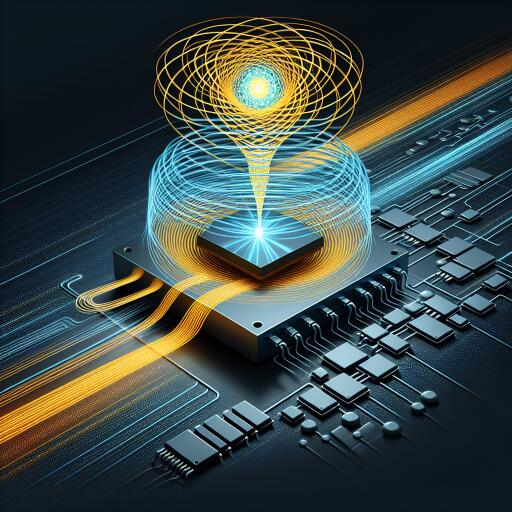Spintronics for Achieving System-Level Energy-Efficient Logic
The continuous expansion of high-performance computing has created a burgeoning need for data processing capabilities. As these demands extrapolate to the future, it becomes evident that an energy-efficient alternative to the silicon complementary metal-oxide semiconductor (CMOS) switch is essential to sustain the needs of future computing landscapes. Spintronic logic, which harnesses spin and magnetism to encode information, stands as a potential candidate to offer such an energy-efficient switch.
Though promising in theory, spintronic logic is still in its developmental stages and lacks the maturity of CMOS logic. It has yet to be fully realized at the level of an entire processor system. This scenario calls for a thoughtful examination of spintronic logic technologies, with a focus on outlining research directions that can bridge this gap.
In this review, we place spintronic logic within the context of the larger objective of transcending the constraints of current CMOS technology. We delve into five distinct types of spintronic logic, elaborating on their operating principles, advantages, progressions, and the challenges they face.
The types of spintronic logic discussed include:
1. **All-Spin Logic (ASL):** ASL is a spintronic system that operates using the spin of electrons, eliminating the charge flow to achieve logic operations. Its primary advantage lies in low energy consumption during switching. However, the field faces technological hurdles, such as integrating spin-calculation layers efficiently.
2. **Magneto-Electric Spin-Orbit Logic (MESOL):** MESOL stands out due to its capability to perform operations through spin-orbit interactions, enhancing energy efficiency. Progress in this area requires advancements in materials that support efficient spin-orbit torque.
3. **Spin-Torque Transfer Devices (STTD):** These devices utilize the torque generated by spin-polarized currents to manipulate magnetic configurations, potentially leading to faster and more energy-efficient processing. However, further material development is required for practical system-level integration.
4. **Domain Wall Logic (DWL):** DWL leverages shifts in magnetic domains to encode logic states. Its non-volatility and endurance are major benefits, but its scaling remains a challenge.
5. **Nanomagnetic Logic (NML):** NML uses arrays of nanoscale magnets for computation, offering significant energy efficiency through its magnetism-based operations. Scalability and speed present notable challenges for this technology.
To ensure the effective advancement of spintronic logic, future research should focus on specific pivotal areas:
– **Low-Voltage Operation:** Achieving reliable low-voltage operation is critical to achieving an efficient energy profile for spintronic devices.
– **Benchmarking:** Setting up transparent benchmarking standards for application-level tasks is necessary for evaluating the practical prowess of spintronics in real-world scenarios.
– **Unique Spintronic Features:** Developing computing architectures that exploit spintronic features such as non-volatility, high endurance, and low static power consumption can provide a significant edge over traditional computing technologies.
– **Integration with Circuits:** Adapting spintronic logic to both computing and memory circuits offers potential for versatile application usage, driving the technology towards more comprehensive solutions in computational systems.
This review aims to provide both motivation and direction for high-risk, high-reward research in the field of spintronic logic. It underscores the importance of pursuing these research paths parallel to the existing CMOS road map, enriching the quest for leaps beyond current technology frontiers. As an evolving field with the potential to deliver groundbreaking improvements in energy efficiency and performance, spintronics represents a critical focus area for future technological advancements.









